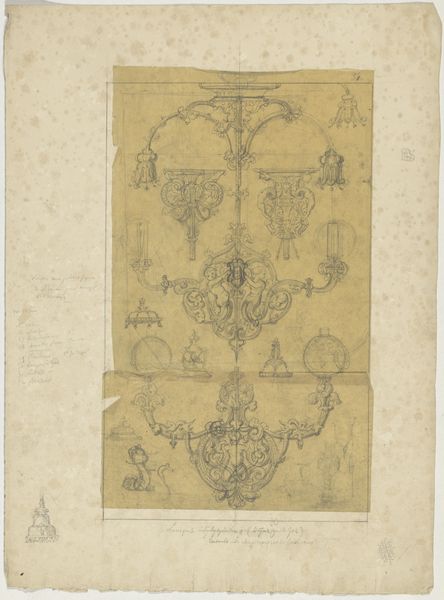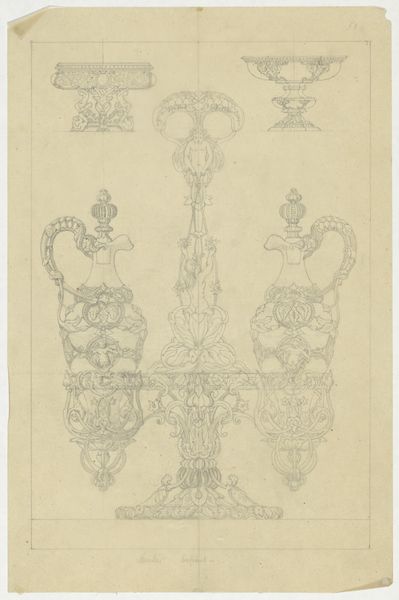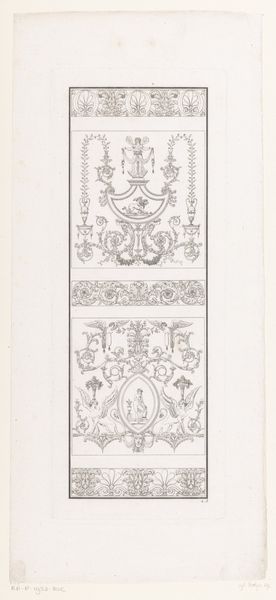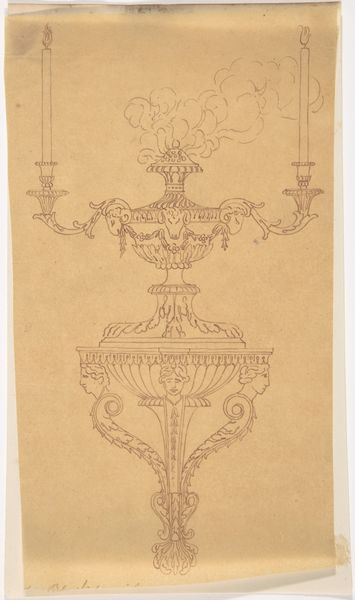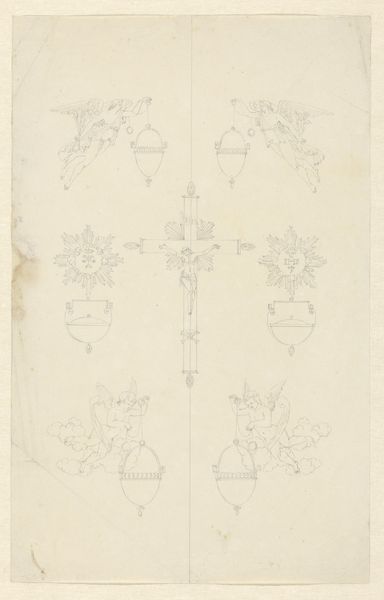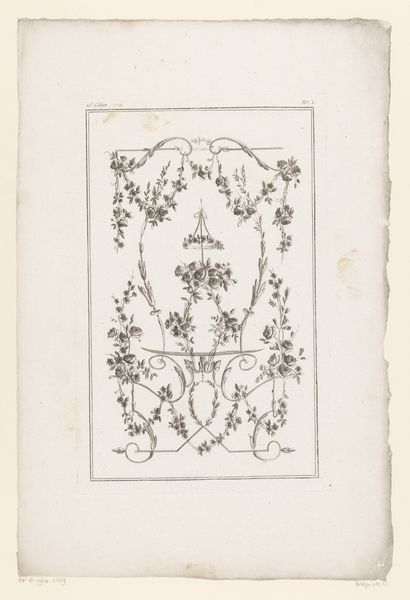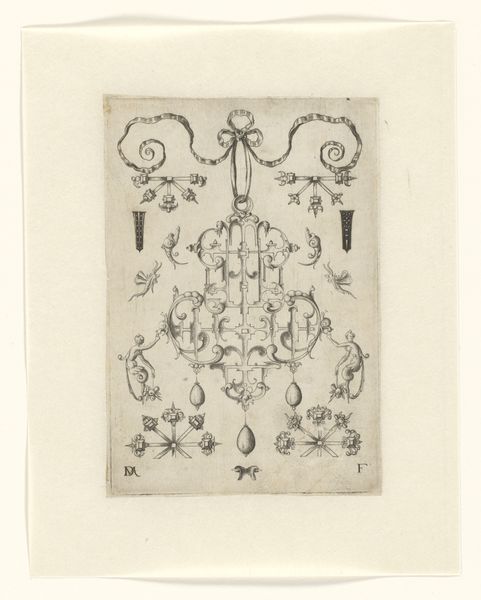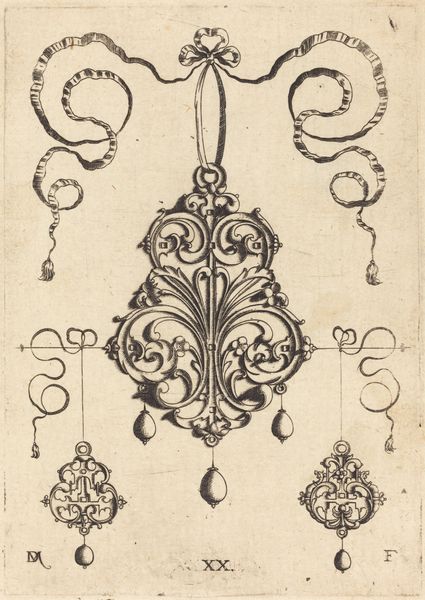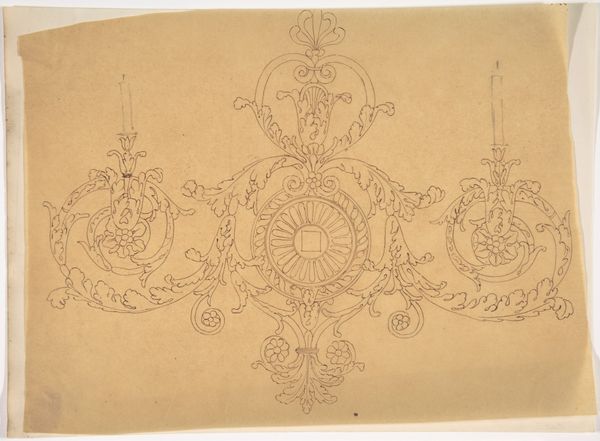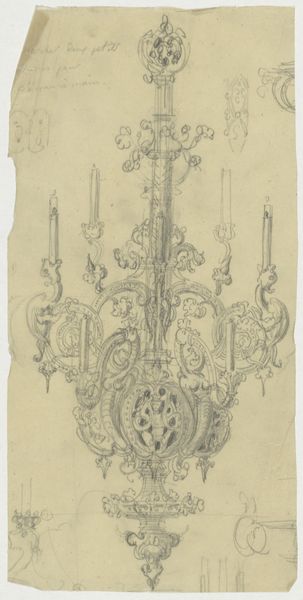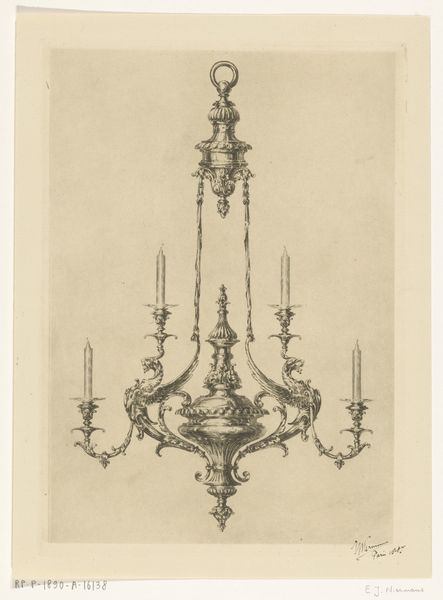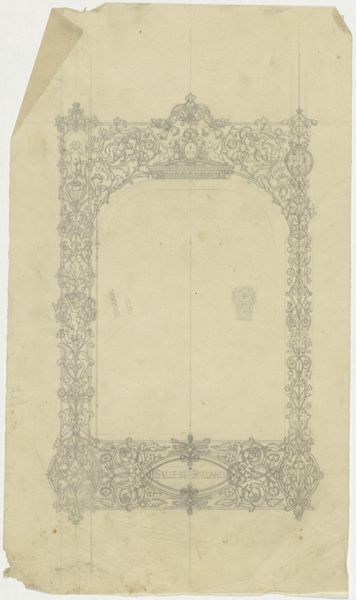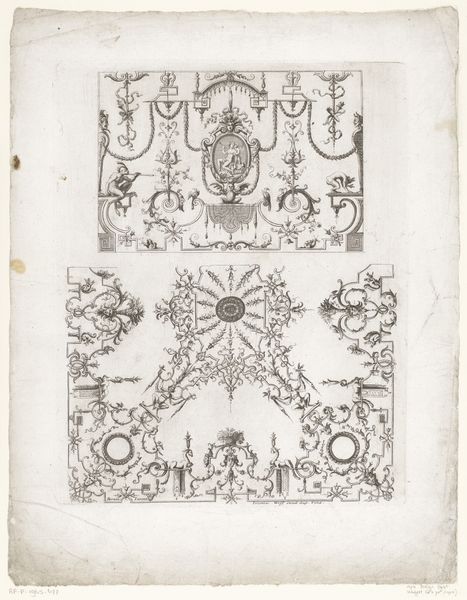
drawing, metal, paper, graphite, architecture
#
drawing
#
pen drawing
#
metal
#
paper
#
geometric
#
romanticism
#
graphite
#
decorative-art
#
architecture
Dimensions: height 215 mm, width 375 mm
Copyright: Rijks Museum: Open Domain
Curator: Here we have a drawing from the Feuchère firm, entitled "Hanglampen," dating from approximately 1830 to 1850. The piece is rendered in graphite, pen, and ink on paper, detailing designs for hanging lamps and showcasing a very distinct romantic sensibility. Editor: It strikes me as almost ghostly, with the light graphite and delicate lines against the pale paper. A study in symmetrical arrangements. And even without colour, it gives a real sense of opulent interiors and the soft glow these fixtures must have cast. Curator: Feuchère, under Pierre-François Feuchère, gained prominence in Paris for their designs during the Bourbon Restoration. They significantly contributed to redefining French taste following the Empire style's austerity. The firm catered to elite clientele and designed everything from tombs to stage sets to these highly decorative lighting fixtures. Editor: That context is incredibly useful, especially the bit about responding to austerity. Those swinging putti, and vegetal volutes – such emblems of abundance. These details, to me, reflect a societal hunger for extravagance after periods of constraint and revolution. This isn't merely about illumination; it's about signaling a return to splendor. The careful consideration given to ornament reflects the values of its time. Curator: Indeed. We also see how designs moved through print culture and industrialization to shape tastes for the rising middle classes. Decorative objects are key indicators in material culture, of those very real shifts of taste. Editor: Agreed, light fixtures occupy such a liminal space, straddling practicality and symbolism. And I think this image beautifully encapsulates that tension. The soft light against cold metal: beauty through contrasts. I can see both utility and ritual here, especially through its emblematic use of cherubs and decorative folliage which represent both humanistic beauty and natural bounty. Curator: Thank you, that gives us some further insights into design in the decorative arts during this particular period and context. Editor: And for helping see the cultural symbolism lighting the way towards Romantic sensibilities.
Comments
No comments
Be the first to comment and join the conversation on the ultimate creative platform.
